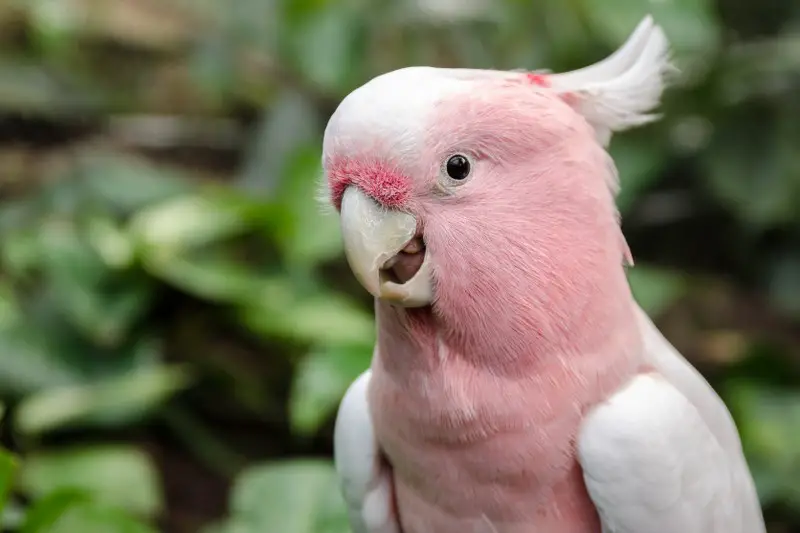Whether you are a proud pup parent, planning to become or just simply curious, chances are you have wondered about the difference between puppy and adult dog food. It’s a common question among pet owners, especially those who are new to caring for furry companions. Choosing the right food for your four-legged friend is essential for their overall health and well-being. So, let’s take the next few minutes to delve into the world of canine nutrition and explore the difference between adult and puppy dog food.

Understanding the Difference Between Puppy Food and Dog Food
So, let’s start by answering the burning question: what’s the difference between puppy and adult dog food? And why do you need to know the difference? Well, this knowledge will help you make informed decisions about your furry friend’s nutrition, ensuring they grow up strong and stay healthy throughout their life. So, without further ado, let’s dive in!
Nutritional Requirements of Puppies
How is puppy food different? To answer this question we need to pay close attention to the tiny furry friends. Puppies are like little bundles of energy and curiosity. They grow rapidly, and their bodies change almost daily. This is why their nutritional needs are quite different from those of adult dogs hence raising the dog food vs puppy food question. In this section, we’ll delve into these differences, making it clear why choosing the right puppy food is essential.
Rapid Growth and Development in Puppies
Importance of Protein for Muscle and Tissue Development: Just like how building blocks are essential for constructing a strong building, protein is crucial for a puppy’s growth. It’s the key ingredient for forming strong muscles and tissues. Puppies need more of it because they’re busy constructing their bodies from scratch. According to The Kennel Club, too little protein can cause disturbed growth as well as immune compromise and increased susceptibility to various stressors and infectious agents
Imagine if you tried to build a sandcastle with just a few grains of sand. It wouldn’t be very impressive, right? Similarly, puppies need a lot of protein to build their bodies effectively so there is a difference between puppy and adult dog food.
Need for Higher Fat Content for Energy: Puppies are little balls of boundless energy. They bounce around, play, and explore all day long. To fuel this constant activity, they require more fat in their diet than adult dogs. Think of fat as the fuel in their tiny engines, keeping them going and growing. According to WebMD, fats help keep their skin and hair healthy and help your puppy develop a healthy brain and healthy vision.
Just like a race car needs high-octane fuel to perform at its best, puppies need fat to keep up with their high-energy lifestyle. That is another distinction you will notice between adult vs puppy food.
Essential Vitamins and Minerals for Bone and Teeth Development: Puppies are in the process of growing their adult teeth and building strong bones. This requires a generous supply of vitamins and minerals.
Think of these vitamins and minerals as the workers in a construction crew. This difference between puppy and adult dog food ensures the puppy’s body is built properly and the foundation (bones) is solid.
Emphasis on Controlled Calcium and Phosphorus Levels
Calcium and phosphorus are like the architects and engineers of your puppy’s skeleton. They need just the right amount to make sure everything is in the right place. Too much or too little can lead to structural problems, especially in large-breed puppies.
Think of it like building a house. If you use too much cement (calcium), the walls might be too thick, and the house could be unstable. If you don’t use enough, the house might collapse. Getting the balance right is crucial.
Special Attention to DHA for Brain and Vision Development
DHA (Docosahexaenoic Acid) is like a superhero for your puppy’s brain and vision. It helps the brain cells communicate and develop properly, and it’s essential for good eyesight.
Imagine DHA as the brain’s own internet connection. It ensures all the important messages are sent and received correctly, and it helps your puppy see the world clearly, a vital difference between puppy and adult dog food.
So, in a nutshell, the difference in puppy food and dog food is like the difference between building a skyscraper and renovating an old house. Puppies are in the construction phase, while adult dogs are in the maintenance phase. Understanding these nutritional differences is key to providing the best start in life for your furry friend.
Nutritional Requirements of Adult Dogs
Now that we understand what the little furry friends require and the difference between puppy and adult dog food, let’s learn about how it differs from their older counterparts. Let’s delve into the nutritional requirements of adult dogs, highlighting the differences between their dietary needs and those of puppies. Hopefully, it will address some commonly searched questions such as “difference between puppy food and adult dog food,” and “Can adult dog eat puppy food?”
Explanation of the Differences in Metabolism
Reduced energy requirements: Adult dogs have slower metabolic rates compared to puppies. As dogs grow, their energy needs decrease. This is because they have already reached their full size and no longer require the excess calories needed for growth.
Maintenance of muscle mass: While puppies require higher levels of protein to support their rapid growth, adult dogs need protein to maintain muscle mass and overall health. Lean muscle is essential for an adult dog’s mobility and daily activities.
Balanced Diet With Adequate Protein, Fat, and Carbohydrates
Adult dogs thrive on a well-balanced diet that provides them with the essential nutrients they need to maintain their health and energy levels. According to PetMD, there are 10 essential amino acids that are needed for dogs to maintain a healthy life. This is an important difference between puppy and adult dog food.
Protein: Adult dogs require a moderate level of protein in their diet. Protein helps repair tissues, supports the immune system, and provides energy for their daily activities. Look for dog foods with high-quality protein sources like chicken, beef, or fish.
Fat: A moderate level of fat is crucial for adult dogs to meet their energy requirements. Fat also aids in the absorption of fat-soluble vitamins. It’s important to choose sources of healthy fats like omega-3 and omega-6 fatty acids.
Carbohydrates: While dogs are primarily carnivores, they can digest and benefit from carbohydrates in their diet. Carbohydrates provide a source of energy and fiber, aiding in digestion.
Importance of Fiber for Digestive Health
Fiber plays a vital role in maintaining a healthy digestive system for adult dogs and a difference between puppy and adult dog food. It helps regulate bowel movements, prevent constipation, and can even contribute to weight management. Fiber-rich ingredients like brown rice, sweet potatoes, and vegetables are beneficial in adult dog food.
Joint Support for Aging Dogs
As dogs age, their joints may become less flexible, leading to conditions like arthritis. Adult dog food formulations often include ingredients like glucosamine and chondroitin sulfate to support joint health. These components help maintain cartilage and reduce the risk of joint-related issues, which are more common in older dogs, which is a difference between puppy and adult dog food.
Proper Hydration and Water Intake
Hydration is crucial for adult dogs. Encourage them to drink plenty of water, especially during hot weather or after physical activity. Adequate water intake is essential for digestion, temperature regulation, and overall well-being.
Did you know What is Chicken Meal in Dog Food? Understanding the difference between puppy and adult dog food and the nutritional requirements of adult dogs is essential to providing them with the right diet tailored to their needs. Adult dog food should focus on maintaining their health, muscle mass, and joint function while ensuring they stay adequately hydrated. Always consult your veterinarian to select the most appropriate food for your adult dog’s requirements.

Key Difference Between Puppy and Adult Dog Food
When it comes to the nutritional needs of dogs, understanding the differences between adult dog food and puppy food is crucial to ensure their health and well-being. Let’s delve deeper into these distinctions:
Protein Content and Sources
Puppies:
– Puppies require a higher protein intake than adult dogs.
– Protein sources in puppy food often include high-quality animal proteins like chicken, turkey, or beef.
– Adequate protein is essential for muscle and tissue development in growing puppies.
Adult Dogs:
– Adult dog food typically contains a slightly lower protein content than puppy food.
– Protein sources may vary and can include a wider range of meats and plant-based proteins.
– Adult dogs need protein to maintain muscle mass and support overall health.
Fat Content and Sources
Puppies:
– Puppy food contains a higher fat content to provide the energy needed for their active and growing bodies.
– Healthy fat sources often include chicken fat or fish oil, which provide essential fatty acids.
Adult Dogs:
– Adult dog food has a lower fat content since adult dogs have lower energy requirements.
– Fats are still present but at a reduced level to help maintain a healthy weight.
Calcium and Phosphorus Levels
Puppies:
– Puppy food contains controlled levels of calcium and phosphorus to support proper bone and teeth development.
– Excessive amounts of these minerals can lead to skeletal issues in puppies.
Adult Dogs:
– Adult dog food has lower levels of calcium and phosphorus since their bones have already reached maturity.
– Excess calcium can be harmful to adult dogs.
DHA and Other Essential Nutrients
Puppies:
– Puppy food often includes DHA (docosahexaenoic acid), an omega-3 fatty acid crucial for brain and vision development.
– Additional vitamins and minerals are also present to support growth.
Adult Dogs:
– DHA levels are typically lower in adult dog food since their developmental needs have been met.
– The focus shifts towards maintaining overall health with vitamins and minerals.
Caloric Density
Puppies:
– Puppy food has a higher caloric density to meet the energy demands of their growing bodies.
– Careful portion control is essential to prevent overfeeding.
Adult Dogs:
– Adult dog food has a lower caloric density to prevent excessive weight gain.
– Proper portion sizes help maintain a healthy weight.
Fiber Content
Puppies:
– Puppy food usually contains less fiber to ensure easy digestion for sensitive puppy tummies.
Adult Dogs:
– Adult dog food may have slightly higher fiber content to support digestive health and regular bowel movements.
Can Kittens Eat Adult Food? Let’s find out!
Special Formulations for Large Breed Puppies
– Large breed puppies have unique requirements, particularly regarding bone and joint health.
– Special formulations for large breed puppies often include controlled calcium and phosphorus levels to prevent skeletal issues.
Understanding these key differences between puppy and adult dog food is vital for pet owners. Always consult with a veterinarian to select the right food for your dog based on their age, breed, size, and individual health needs.

When to Transition from Puppy to Adult Dog Food
Transitioning from puppy to adult dog food is a critical step in your furry friend’s development. The timing of this transition can significantly impact your dog’s health and well-being. Here, we’ll delve into the factors affecting the timing of the transition, how to recognize signs that your puppy is ready for the difference between puppy and adult dog food, and how to make a smooth transition.
Factors Affecting the Timing of the Transition
Breed Size: The size of your dog’s breed plays a crucial role in determining when to switch to adult dog food. Smaller breeds typically mature faster and can transition sooner than larger breeds. Small breeds may be ready as early as 9 to 12 months, while larger breeds may take 12 to 18 months or longer, a difference between puppy and adult dog food.
Growth Rate: Understanding your dog’s growth rate is vital. Rapidly growing breeds, like Great Danes or Saint Bernards, have different nutritional needs than slower-growing breeds. Slower growth allows the skeletal system to develop more steadily, reducing the risk of developmental issues. Factors such as the breed’s expected adult size and their individual growth patterns should be considered for the difference between puppy and adult dog food.
Individual Health Considerations: Each dog is unique, and some may have specific health considerations that influence the transition timeline. If your puppy has certain health issues, consult with your veterinarian to determine the best timing for the switch. Health conditions like obesity or allergies might require a more tailored approach to transitioning to the difference between puppy and adult dog food.
Signs That a Puppy is Ready for Adult Food
Recognizing when your puppy is ready for adult dog food is crucial to ensure their nutritional needs are met to understand the difference between puppy and adult dog food. Look out for the following signs:
Age: As a general guideline, most puppies are ready to transition to adult food when they are around 12 months old. However, smaller breeds may be ready sooner, while larger breeds may need more time on puppy food.
Steady Growth: Your puppy’s growth should start to slow down, and they should be approaching their adult height and weight.
Healthy Body Condition: Your puppy should have a healthy body condition, with visible muscle tone and a moderate layer of fat. Consult your veterinarian to assess your dog’s body condition.
Dental Development: Adult teeth should have fully replaced puppy teeth, indicating that your puppy’s digestive system is ready for adult food.
Energy Levels: Your puppy’s energy needs may stabilize, and they may not require as many calories as they did during their rapid growth phase.
How to Make a Smooth Transition
Transitioning your puppy to adult dog food should be done gradually keeping in mind the difference between puppy and adult dog food to prevent digestive upset. Follow these steps for a smooth transition:
Consult Your Veterinarian: Before making any changes, consult your vet to ensure the timing is right for your specific puppy.
Choose a High-Quality Adult Food: Select a reputable brand of adult dog food that meets your dog’s specific needs. Consider factors like breed size, activity level, and any dietary restrictions.
Gradual Transition: Over the course of about a week or more, gradually mix increasing proportions of the adult food with the puppy food. Start with 25% adult food and 75% puppy food, then 50/50, 75% adult food, and 25% puppy food, before finally switching to 100% adult food.
Monitor Your Dog: Keep an eye on your dog’s behavior and stool during the transition. If you notice any digestive issues, slow down the transition or consult your vet. This is a difference between puppy and adult dog food.
Adjust Portions: Be mindful of portion sizes as your dog transitions. Adult dog food may have different caloric densities, so adjust the amount you feed accordingly to maintain a healthy weight.
Transitioning your puppy to adult dog food is a critical step in their development. Factors like breed size, growth rate, and individual health considerations should guide the timing of this transition. Keep a close eye on your puppy’s growth and behavior, and consult your veterinarian for personalized advice to ensure a smooth and successful transition to adult dog food. This is a difference between puppy and adult dog food. Do you know Why Do Dogs Like to be Pet?

Choosing the Right Dog Food for Your Pet
When it comes to selecting the perfect dog food for your furry friend, there are several crucial factors to consider. Making an informed choice ensures that your dog receives the nutrition they need to thrive at every stage of life. Here are some key aspects to keep in mind:
Importance of Consulting with a Veterinarian
Before making any decisions about your dog’s diet, it’s essential to consult with a veterinarian. Your veterinarian can provide personalized guidance based on your dog’s age, breed, size, and health condition. They can help you determine the appropriate type of food, portion sizes, and any specific dietary restrictions your dog may have. This is a difference between puppy and adult dog food.
Veterinarians are well-versed in pet nutrition and can recommend reputable dog food brands that meet the required standards. They can also identify any underlying health issues or allergies that may influence your choice of dog food.
Reading and Understanding Pet Food Labels
Pet food labels contain a wealth of information that can help you make an informed choice for the difference between puppy and adult dog food.
Here’s what to look for when reading and interpreting these labels:
Ingredient List: Start by examining the ingredient list. Ingredients are typically listed in descending order by weight. Look for high-quality protein sources like chicken, beef, or fish as the primary ingredients. Avoid foods with excessive fillers or artificial additives.
Guaranteed Analysis: This section provides information on the nutrient content, including protein, fat, fiber, and moisture levels. Ensure that the food meets your dog’s specific needs based on their life stage.
AAFCO Statement: Check for an AAFCO (Association of American Feed Control Officials) statement on the label. This statement indicates that the food meets the nutritional standards set by AAFCO for either puppies, adults, or all life stages.
Allergens: If your dog has known allergies or sensitivities, carefully review the ingredient list for potential allergens. Common allergens include grains like wheat, corn, and soy, as well as specific protein sources. This is a difference between puppy and adult dog food.
Consideration of Allergies and Sensitivities
Understanding your dog’s allergies and sensitivities is paramount when selecting the right food. If your dog has known allergies or intolerances, opt for a dog food formula designed to address these issues. Limited-ingredient diets or hypoallergenic options can be beneficial for dogs with food sensitivities.
If you suspect your dog has allergies but aren’t sure, consult with your veterinarian. They may recommend an elimination diet or allergy testing to identify specific triggers. This is a difference between puppy and adult dog food.
Premium vs. Budget Dog Food Options
The market offers a wide range of dog food options, varying in price and quality. While budget-friendly options may seem tempting, it’s crucial to strike a balance between quality and affordability. Premium dog foods often use higher-quality ingredients and undergo more rigorous testing to ensure nutritional adequacy.
Investing in quality dog food can contribute to your dog’s overall health and well-being, potentially reducing future veterinary bills associated with dietary-related health issues. Your veterinarian can provide recommendations based on your budget and your dog’s needs. This is a difference between puppy and adult dog food. VCA Animal Hospitals also suggests to “feed your dog the highest-quality food you can afford.”

Common Myths and Misconceptions in the Difference Between Puppy and Adult Dog Food
When it comes to choosing the right food for your furry companion, there are numerous myths and misconceptions circulating in the pet world. Let’s address some of these myths and misconceptions, shedding light on the truth behind them:
Debunking Myths About High-Protein Diets in the Difference Between Puppy and Adult Dog Food
Myth #1: More Protein is Always Better
One common misconception is that dogs of all ages, including puppies, should have a diet extremely high in protein. However, the truth is that while puppies do require more protein than adult dogs, there is a limit to how much they can benefit from it.
Myth #2: High-Protein Diets Cause Kidney Damage
Some people worry that feeding their dogs high-protein diets, particularly in the case of puppies, may lead to kidney damage. But in reality, there’s no conclusive evidence to support this notion, especially when protein levels are within the appropriate range.
Clarifying Misconceptions About Grain-Free Diets
Myth #1: Grain-Free is Always Healthier
Grain-free dog food gained popularity with the belief that it’s a healthier choice. However, for most dogs, grains like rice and oats are not harmful. In fact, grains can be a valuable source of carbohydrates and fiber.
Myth #2: Grain-Free Diets are Essential for Dogs with Allergies
While grain allergies do exist, they are relatively rare. Most food allergies in dogs are linked to specific proteins, not grains. It’s essential to identify the specific allergen through proper testing before switching to a grain-free diet. This is a difference between puppy and adult dog food.
Addressing the Importance of Balanced Nutrition
Myth #1: All Dogs Have the Same Nutritional Needs
This myth assumes that dog food is a one-size-fits-all solution. In reality, dogs vary greatly in breed, size, age, and activity level, which means their nutritional needs also differ. Puppies, for example, have specific requirements for growth and development.
Myth #2: Homemade Diets are Always Better
Some well-intentioned pet owners believe that homemade diets are superior to commercial dog food. However, creating a balanced homemade diet that meets all your dog’s nutritional needs can be challenging and may lead to deficiencies if not properly formulated.
Understanding the truth behind these common myths and misconceptions is crucial for making informed decisions about your dog’s diet. Remember that consulting with a veterinarian and selecting food tailored to your dog’s specific life stage and needs is the best way to ensure their health and well-being. This is a difference between puppy and adult dog food.
If you have any questions or would like to share your experiences with different types of dog food, feel free to join the conversation in the comments section below. Your input and questions are valuable in helping fellow pet owners make the best choices for their beloved companions. Check out these 10 Scary Dogs to Beware Of!
FAQs
Q1: How is puppy food different from regular dog food?
A1:Puppy food differs from regular adult dog food in several ways. It typically contains higher protein and fat levels to support a puppy’s rapid growth and higher energy needs. Puppy food also has carefully balanced calcium and phosphorus ratios for healthy bone development, and it often includes nutrients like DHA for brain and vision development.
Q2: Can an adult dog eat puppy food?
A2: While adult dogs can eat puppy food occasionally, it’s not ideal for their long-term nutrition. Puppy food is specifically designed to meet the unique needs of growing puppies, and the higher protein and fat content may lead to excessive weight gain in adult dogs. It’s best to feed adult dogs with food formulated for their life stage. This is a difference between puppy and adult dog food. Why Is My Dog Acting Weird? Find out!
Q3: Can a puppy eat adult dog food?
A3: Puppies have different nutritional requirements than adult dogs, so it’s generally not recommended to feed them adult dog food exclusively during their growth phase. Puppies need higher levels of certain nutrients, and adult dog food may not provide these adequately. Consult your veterinarian to ensure your puppy gets the right nutrition.
Q4: Can You Give a Puppy Adult Dog Food?
A4: While adult dog food won’t harm a puppy if given occasionally, it’s not suitable for long-term nutrition. Puppies need food formulated to meet their specific growth and development needs. Feeding adult dog food regularly may result in nutrient imbalances. Consult your vet for guidance on the right food for your puppy.
Q5: Are There Any Dog Food for Puppies and Adults?
A5: Yes, some dog foods are formulated to be suitable for all life stages, including puppies and adults. These foods are typically labeled as “all life stages” or “complete and balanced for all life stages.” They are carefully formulated to meet the nutritional needs of dogs at various life stages, making them a convenient option for households with dogs of different ages. Always check the label for confirmation.
Encouragement for Responsible Pet Ownership Through Informed Food Choices
Informed food choices are a cornerstone of responsible pet ownership. It’s not just about selecting the most expensive or trendy dog food; it’s about understanding your dog’s unique requirements and tailoring their diet accordingly. By making well-informed decisions, you can ensure that your pet thrives throughout their life. This is a difference between puppy and adult dog food.
Remember to consult with your veterinarian, monitor your dog’s health, and be open to adjustments as they age. Responsible pet ownership involves more than just feeding; it involves love, attention, and a commitment to providing the best care possible.
In conclusion, the difference between puppy food and adult dog food is more than just a matter of age; it’s a matter of ensuring a happy, healthy life for your four-legged companion. So, take these insights to heart, make informed choices, and cherish the precious moments you share with your beloved pet.
Conclusion
We’ve delved into the critical difference between puppy and adult dog food, shedding light on the importance of providing the right nutrition at different stages of your furry friend’s life. As a responsible pet owner, you play a pivotal role in your dog’s overall health and well-being. Understanding the difference between puppy and adult dog food is not just a matter of preference; it directly impacts your furry companion’s growth, development, and longevity. For more in-depth articles about pets, dive into our blog!












